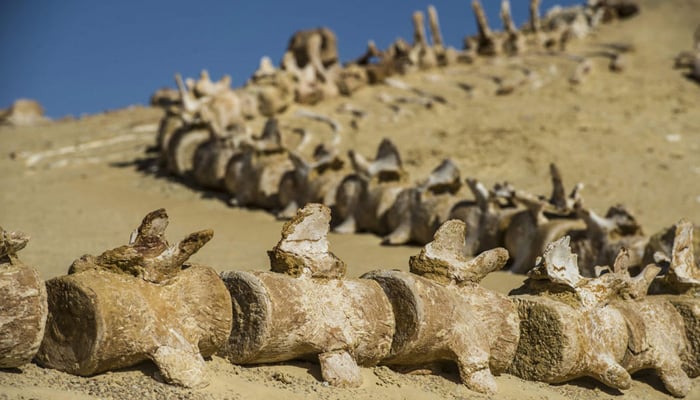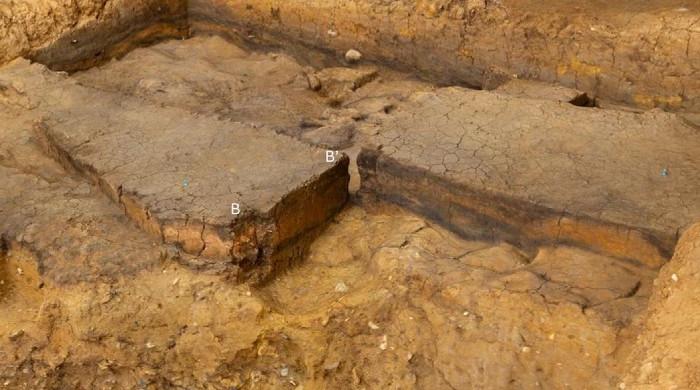Fossils in Sahara Desert reveal whales once had feet and toes
Desert site in Egypt known as Wadi Al-Hitan contains primitive whale remains dating back to late Eocene epoch
July 07, 2025

A desert site in Egypt known as Whale Valley, or Wadi Al-Hitan, holds more than 400 fossilised whale skeletons that show the remarkable evolutionary journey of whales from land to sea, Live Science reported.
The site, located in the Egyptian Sahara, contains primitive whale remains dating back to the late Eocene epoch — between 55.8 million and 33.9 million years ago — when the area was submerged under the Tethys Ocean, according to UNESCO.
“These fossils represent one of the major stories of evolution: the emergence of the whale as an ocean-going mammal from a previous life as a land-based animal,” UNESCO’s website states.
The first major discovery at Whale Valley came in 1902, when paleontologists unearthed a previously unknown whale species, Basilosaurus isis (formerly Zeuglodon isis). This ancient whale grew up to 60 feet (18 metres) long and likely preyed on smaller whales, crushing their skulls before swallowing them whole, according to a 2019 study.

“B. isis had a long snout and was armed with pointed incisors and sharp cheek teeth,” Manja Voss, a marine mammal expert at the Berlin Museum of Natural History and lead author of the 2019 study.
In 1989, a team from the University of Michigan and the Egyptian Geological Museum discovered B. isis fossils with preserved hind limbs, feet and toes — a rare find that confirms whales once had legs, according to a 2023 review. Though modern whales lack hind limbs, they retain pelvic bones, indicating their terrestrial ancestry, University of Hawaii researchers noted.
In 2005, a near-complete B. isis skeleton led UNESCO to declare Whale Valley a World Heritage Site. Since then, more marine fossils have been found, including ancient turtles, sharks, rays, sea cows, and crocodiles, preserved thanks to the area’s arid climate since the Pliocene.
The site now functions as an open-air museum with ongoing research and strict protection.









